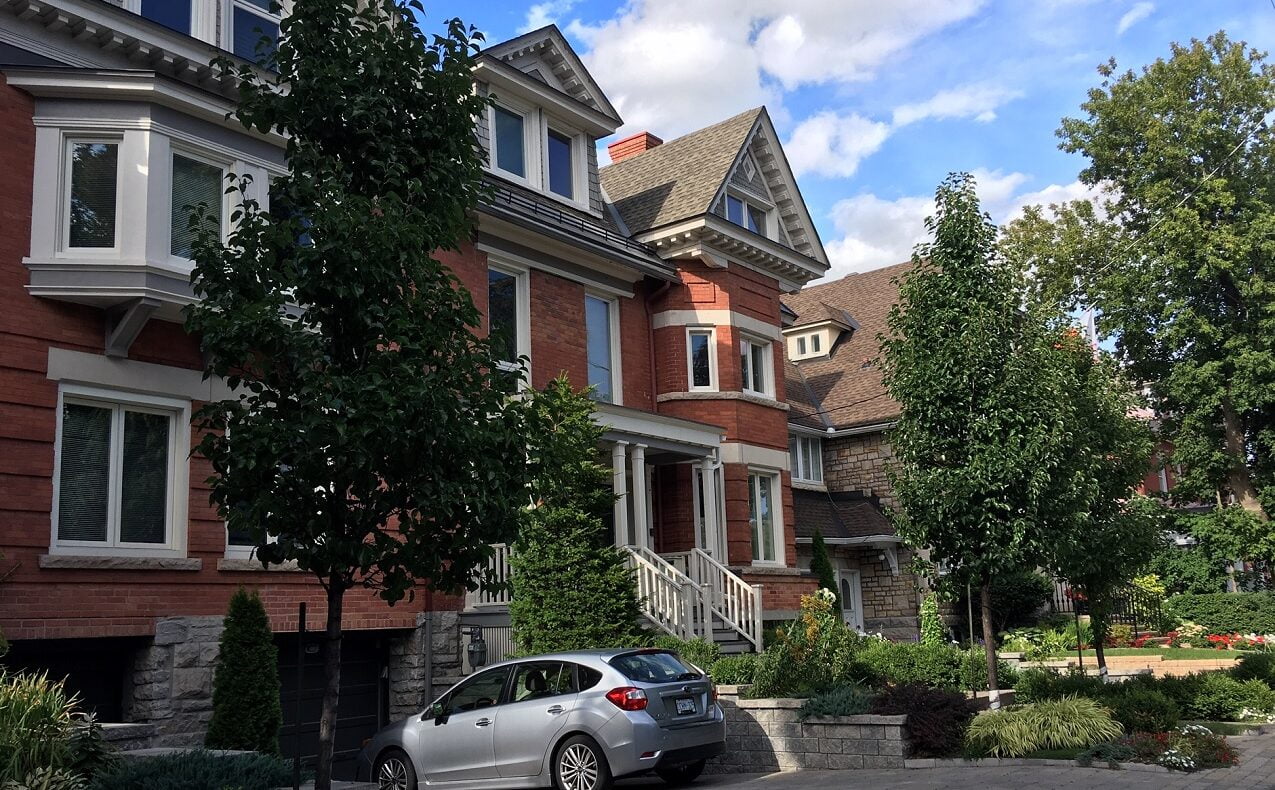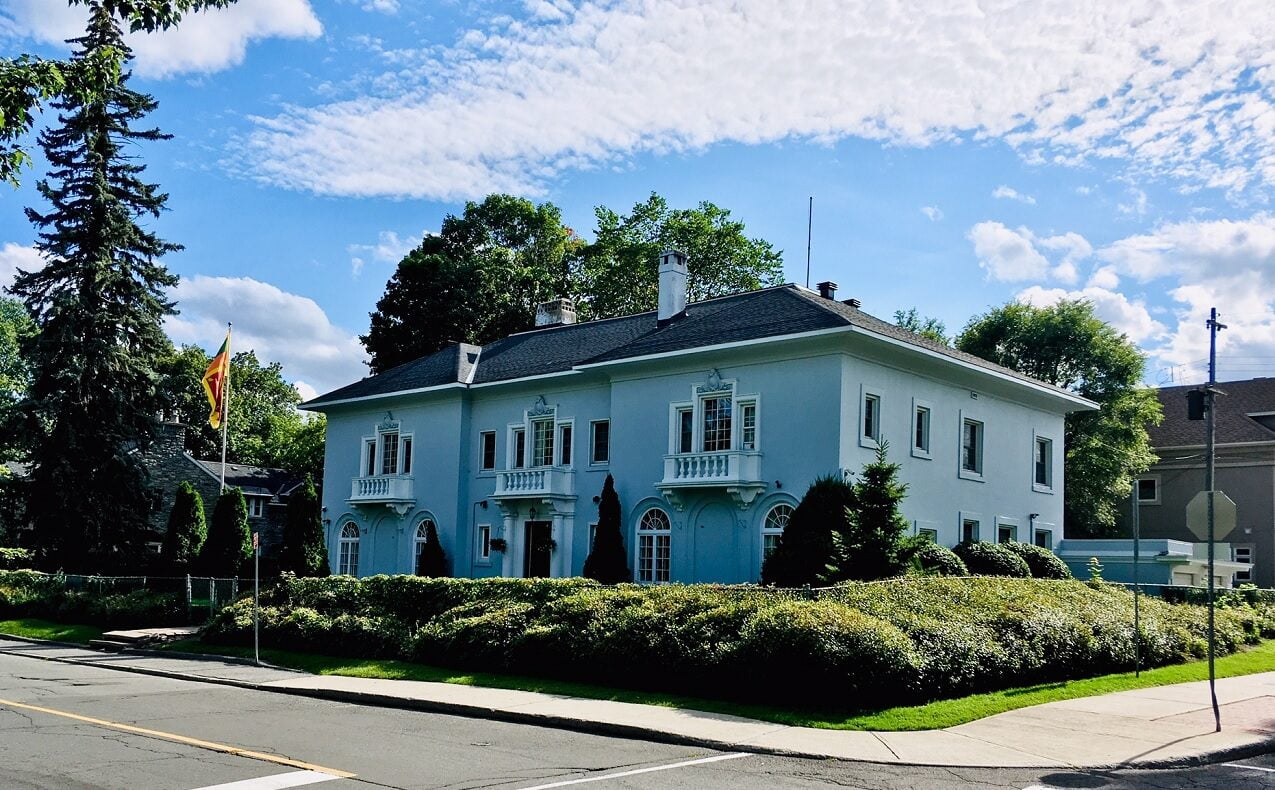Boundaries
Just below Rideau Street on the north, Nicholas Street and the Queensway on the south, the Rideau Canal on the west, and the Rideau River on the east.

History
In 1856, what is now the University of Ottawa moved into this area from nearby Lowertown. From the 1870s until the early 1900s, Sandy Hill was one of Ottawa’s wealthiest residential areas; Strathcona Park on the Rideau River was landscaped for elegant strolling and opened in 1907. The neighbourhood sits on the eastern edge of downtown and gets its name from its hilly terrain and sandy soil, which make it difficult to erect large buildings. Sandy Hill’s demographics change dramatically within a few blocks: Relatively affluent families live near the embassies along the Rideau River, but closer to the university, one finds students, senior citizens and new immigrants, and housing includes boarding houses, student rentals, modest private homes and co-ops. Today, the neighbourhood’s residents are a mix of anglophones and francophones, including immigrants from Somalia, Lebanon, Haiti, Morocco, Poland and many other countries.
Claim to fame
The University of Ottawa (aka uOttawa) dominates the western edge of the neighbourhood, and students give the whole area a young, lively (sometimes too lively) vibe.
Sandy Hill neighbourhoods
Sandy Hill is often divided into four areas. North Sandy Hill consists of the area north of Laurier Avenue, where many buildings date from the 19th century. Recently, new condo developments have reshaped Rideau Street along its northern edge.
South of Laurier Street is South Sandy Hill, largely built after the Second World War, although there are numerous older structures.
South of Mann Avenue is densely populated Strathcona Heights. Completely redeveloped in the early 1990s, it consists almost entirely of low-rise apartment buildings that are either subsidized housing or co-ops.
Finally, Robinson Village lies below the Strathcona Heights escarpment, near the Rideau River. Highway construction cut off this area of low-rise homes from the rest of the neighbourhood.
Who’s building where
- The Charlotte: Richcraft Homes
In the area
Sandy Hill’s central location gives residents easy access to the ByWard Market, Parliament Hill, Centretown, New Edinburgh, Vanier/Overbrook, the Rideau River and the Rideau Canal, the National Gallery of Canada, the Fairmont Château Laurier and the National Arts Centre.
Schools
All four major school boards are represented with both elementary and secondary schools found in or near the community:
- English public: Ottawa Carleton District School Board school locator
- English Catholic: Ottawa Catholic School Board school locator
- French public: Conseil des écoles publiques de l’Est de l’Ontario school locator
- French Catholic: Conseil des écoles catholiques du Centre-Est school locator
Businesses
The Rideau Centre, on the neighbourhood’s northwestern edge, offers some 180 stores and services. Other businesses in Sandy Hill include:
- Westin Hotel
- Novotel Ottawa
- Les Suites Ottawa
- McGee’s Inn
- Le Cordon Bleu Ottawa
- Level One Game Pub
- Loblaws
- LCBO
Amenities
Sandy Hill is home to a number of urban amenities, including:
- Arts Court
- University of Ottawa
- Minto Sports Complex
- Strathcona Park (including summer theatre)
- Sandy Hill Community Centre
- Sandy Hill Arena
- Sandy Hill Community Health Centre
- Shaw Centre
- Ottawa Art Gallery
- Ottawa Little Theatre
- Ottawa Public Library: Rideau Branch
- Laurier House National Historic Site
- Baseball diamonds
- Cycling paths
Services
As a long-established neighbourhood, Sandy Hill has a full range of services, including medical offices, a service station, churches, daycare centres, coffee shops, pharmacies and retirement residences. Its community association is Action Sandy Hill.
Transit options
Sandy Hill has excellent public transit access, with multiple bus routes. Three LRT Confederation Line stations (Rideau, uOttawa and Lees) are in or near the neighbourhood.
King Edward Avenue and Nicholas Street connect Sandy Hill to the Queensway (Highway 417), as does the Vanier Parkway on the opposite side of the Rideau River. King Edward Avenue also leads to the Macdonald-Cartier Bridge across the Ottawa River to Quebec.
The extensive network of multi-use pathways along the Rideau Canal and the Rideau River includes two bridges solely for non-motorized traffic: the Adawe Crossing Bridge between Strathcona Park and Vanier/Overbrook, and the Corktown Bridge between the University of Ottawa and Centretown.


